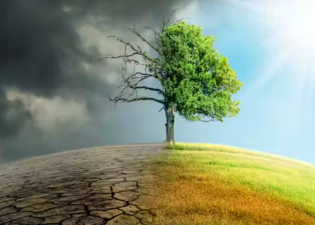What Future Awaits If We Ignore the Environment?
The environment is the fundamental prerequisite for human survival and development, providing the necessary resources and conditions for our survival and development.
- Environmental protection is about preventing the deterioration of the natural environment caused by human life, production, and construction activities. It seeks to control, manage, and eliminate pollution and damage to the environment from various factors, and strives to improve, beautify, and protect the environment so that it better suits human life and work.
- Humans live in the natural environment, so the natural environment is the basic condition for human survival and the material source for production development and economic prosperity. Maintaining ecological balance and protecting the environment are fundamental issues related to human survival and social development.
- Raising environmental awareness and capacity is an important component of sustainable development strategies. In regional economic development, promoting cleaner production to promote corporate awareness and consciousness provides valuable experience.

- The main forms of ecological environmental damage include soil degradation, soil erosion, desertification, salinization, ozone layer depletion, and acid rain. The most serious impact is ozone layer depletion. 2. Damage to the human immune system, weakening it. This poses a serious threat to human health, potentially triggering and exacerbating eye diseases, skin cancer, and infectious diseases, leading to an increase in the incidence of cataracts and skin cancer.
- It slows crop growth, reducing crop quality and yield, and may even cause crop failure. The yields of more than 50% of terrestrial plants, such as potatoes, melons, tomatoes, and sugar beets, will plummet. Forests and grasslands will decline, threatening ecological balance and biodiversity.
- It impacts aquatic ecosystems, harming plankton and reducing the abundance of essential food in the marine food chain. This makes it difficult for shallow-water fish and shellfish to survive, reducing marine life and leading to mass fish deaths. It may also cause mutations in species.
- It causes global warming and the greenhouse effect, with the average surface temperature rising by 1.5-4.5°C, partially melting ice and snow in the Arctic and Antarctic. Combined with the thermal expansion of seawater, this will cause sea levels to rise by 25-100 cm, burying some low-lying coastal cities under the sea. 6. It can cause new environmental problems. Excessive ultraviolet light can make polymer materials like plastics more susceptible to aging and decomposition, which in turn leads to photochemical air pollution.

- Promote technological transformation primarily aimed at energy conservation and consumption reduction. Focus on technological transformation in high-energy-consuming industries and enterprises, such as steel, nonferrous metals, electricity, and building materials. Compulsory phase-out of outdated technologies, processes, and products will be implemented to reduce resource consumption in these industries.
- Accelerate the development of a circular economy. Following the principles of reduction, resource utilization, and reuse, with a focus on energy conservation, water conservation, material conservation, land conservation, and comprehensive resource utilization, actively carry out circular economy pilot projects in key industries, sectors, industrial parks, and cities. Encourage enterprises to adopt circular production practices, promote circular industrial integration, and improve energy and resource efficiency.
- Further improve laws and regulations and strengthen policy guidance. Formulate and revise laws and regulations promoting the efficient use of energy and resources. Simultaneously, utilize fiscal, tax, and pricing policies to promote energy conservation and efficient use, establish a system and mechanism for conscious resource conservation throughout society, accelerate energy and resource price reform, leverage market mechanisms and price leverage, and improve compensation mechanisms for mineral resource consumption.
- Promote "energy-saving" consumption policies to boost energy conservation and emission reduction efforts for businesses. By formulating and implementing "energy-saving" consumption policies, vigorously advocate for energy-saving and green consumption. Expand the scope of mandatory energy efficiency labeling, strengthen energy-saving product certification, and guide users and consumers to purchase energy-saving products. Simultaneously, explore and pilot mandatory government procurement of energy-saving products.




